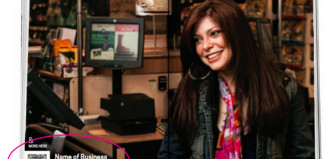I suppose it’s a little like risking a dining experience on the renowned puffer fish. Served properly, it is one of the world’s most sought-after delicacies and is common in Thailand, Korea and Japan. Served improperly, its deadly poison brings hundreds of people a year to an untimely death. And, I suppose, the risk insights us to want it all the more.
Likewise, the “little green fairy,” as absinthe is often called, is steeped in mystery, lore and historical hyperbole. Vincent van Gough and Ernest Hemingway were said to be inspired by absinthe and artistically driven by its hallucinations. But considering their fates, this may not be the best advertisement. Its main ingredient, grande wormwood, has a plant oil that, when concentrated, is quite poisonous, but it’s still used – in the proper proportion – in medicinal tinctures worldwide.
Absinthe was banned until just recently in the U.S., and with its prohibition, came a rising black mar ket that included the hunt for orig inal bottles (some of these have sold at auction for $1,500 to $7,000); the smuggling of samples from European countries in suitcases during vacations across the pond; the purchase of the famous absinthe spoons, stemware and absinthe fountains; and even the scouring of classic and out-of-print cocktail books for absinthe recipes and long- forgotten drinks. You may have even seen artistically embellished postcards, prints, posters and antique advertisements hinting at the “green mad-ness.”
The list of frequently asked questions about absinthe could make any spirits specialist or knowledgeable enthusiast go mad as they try to clear up the misinformation that keeps the rumor mill turning on this mysterious spirit.
Imagine yourself in a small Parisian café with one of the city’s oldest barmen. You approach the brass rail and notice the absinthe fountain, the spoons, the sugar cubes and some very old dust- covered bottles behind the bar. Here is where the imagery of the little green fairy comes in.
One note of caution: It’s not the thujone (one of the components in the wormwood) that is reputed to have psychotropic properties that will leave you stunned from excessive absinthe consumption; it’s the high proof at which the liquor is bottled, and that is the real reason it was banned. Remember how puritanical and hypocritical we can be about our vices. Oscar Wilde, my favorite author, and a fan of the fairy, had much to say about that. In homage to him, I say there are many things that might lead to our downfall, and this might as well be one of them.
JUST THE FACTS
- Proper absinthe is made from three herbs: grande wormwood (containing the thujone), green anise and florence fennel, but many other herbs are often added, including short or petite wormwood, which was often used in place of grande wormwood until the recent legalization of the spirit.
- Absinthe, though often served with sugar over a slotted spoon, and frequently made more like a liqueur by greedy charlatans, is distilled dry and is a liquor, not a liqueur.
- Crafted absinthe is distilled. Then the herbs are macerated in or it is made by re-distillation of the herbs (think gin). One of the world’s most sought-after brands currently in production is Verte Suisse 65.
- The lesser quality absinthe brands are made using a method called “cold soaking.” It is made much like most of the fla vored vodkas on the market today – they may be less expensive, but are inferior in quality. Most but not all of the Franco-Swiss brands are made in this style.
- Louching. This extraordinary word does not refer to a Sunday after too much Saturday night, but to the ritual of adding water to absinthe so it turns cloudy. This also helps get the absinthe to the right strength so that you are not drinking the spirit at its bottled proof. This process, just like adding drops of water or an ice cube or two to barrel-strength scotch or whiskey, allows the botanicals and flavors to escape from the hold of the alcohol at that proof so you can actually taste the fantastic spice, flower and woodsy flavors in the liquor. For this category of spirit, the elements that are non-water-soluble fall out of the solution once the water is added, causing the solution to turn white. The beautiful perfumes and oils find their own way in the world, away from the hold of the parental alcohol and water, making for an inviting adult beverage. For the record, this process in which the botanicals fall out of the solution happens with all the cousin spirits (pastis, sambuca, etc.) and is technically called “colloidal suspension” – careful boys!
- The traditional absinthe slotted spoons that suspend the sugar are lovely and decorative and provide a way for the absinthe fountains to slowly dissolve the sugar into the spirit (because well-made absinthe, remember, is distilled dry). Mix the sugar ratio as you would the water – to your taste. Typically, it is three parts water to one part absinthe, and one sugar cube. But why not try breaking the rules? It’s the way of the little green fairy.
- Austin now boasts its own absinthe bar and cocktilian lounge, Péché, in the old Malaga location on Fourth Street. The food is outstanding and an incredible value. Rob Pate, managing partner and cocktilian, has finally brought Austin a living museum to the little green fairy. He is well-versed on the subject and is a good storyteller, so invite him over to pour you an absinthe cocktail.
- If you are inspired to have an absinthe night or themed cocktail party, Wiggy’s Liquor on Lamar and West Sixth streets rents absinthe fountains. Tim, the owner, has been experimenting with different absinthe ideas and is a bit of an aficionado so ask him for his special recipes.
Lastly, my favorite absinthe cocktail in town is known as an Improved Gin Sour, designed by Fino’s Bill Norris, one of my favorite bar men in the country. Here’s the recipe:
1.5 ounces Bombay or similar gin
half an ounce absinthe
half an ounce lemon
half an ounce simple syrup
1 egg white
Angostura Bitters
Combine gin, lemon and simple syrup with the egg white in a shaker. Shake very hard with ice (try a dry shake with the egg first to really set it). Add absinthe to a chilled coupe or cocktail glass, strain gin mixture on top. Top with a stripe of bitters (hold a cock- tail napkin on the far side of the glass, invert the bitters bottle over the napkin and give it a jolt to get the liquid moving. Draw quickly across the top of the drink.)


































